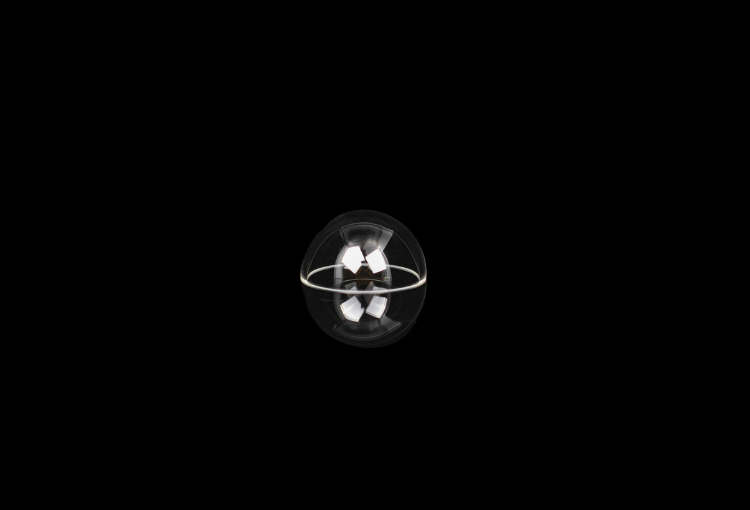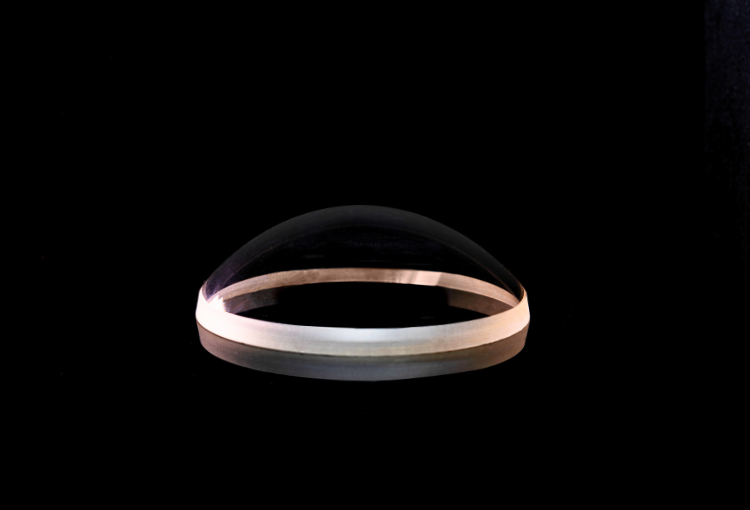Key Takeaways:
- Advantage of optical domes includes their ability to protect custom optical domes in underwater environments, providing optimal pressure resistance for sensitive optical components.
- Optical domes offer a larger field of view and reduced optical aberration compared to flat windows.
- They are made from materials like sapphire and UV fused silica, ensuring durability and resistance to scratches and environmental factors.
- Custom optical domes can be tailored for specific applications, balancing cost, performance, and durability, including for underwater use.
Optical domes play an important part in many optical systems, protecting delicate components from harsh environmental conditions.
Maybe you need to produce high-quality images of deep sea organisms. You’ve got the delicate underwater camera that will produce the high resolution imagery you need, but you need something that will enable them to withstand high pressure found deep under the oceans.
Or maybe you need to install optical components on a fast-moving dome. Pressure might not be as much of an issue, but you’ve certainly got an adverse environment. Winds, dust, and frozen snow may be pelting your precision optical setup with all they are worth— and you still need to see what is happening. What kind of optical dome can maintain a transparent, scratch-free surface under conditions like that?

Applications and Types of Optical Domes
Custom domes can provide protection in a wide variety of situations, and are used for aerospace and defense, underwater imaging, and remote sensing, among other applications. You’ll find them on the Mars Rover, on solar radiation sensors, and covering submarine portals. They keep water, wind, radiation, and debris away from delicate equipment, and can also be used to keep out noxious gasses or withstand pressure.
Formed of transparent material, with a concave internal surface and a convex exterior surface, an optical dome is carefully manufactured so both internal and exterior surfaces are parallel and evenly spaced. Think of them as mono-centric shells, where the inside radius is shorter than the outside radius by a constant thickness.


The advantages of optical dome are a direct result of some careful engineering.
There’s some important optical engineering behind that. Though optical materials used in a dome are chosen for the ideal index of refraction given your application, the index of refraction is still not going to be the same as air. When you have a parallel surface, you minimize the amount of optical aberration caused by the dome. You’re getting as close as you can get to invisible protection.
Durable and high performing dome-shaped optical components can be manufactured from a variety of substrates including zinc sulfide, zinc selenide geranium, UV fused silica, glass, and sapphire. Sapphire is used particularly for infrared ones, such as those used in defense applications. It also happens to be an extremely hard substance, mechanically stable and resistant to scratches. UV fused silica is a good choice for transmitting or receiving light in the UV range, and can be used to protect UV radiometers.
Key Advantages of Optical Domes
Optical dome VS flat window, also made of transparent material. For many applications, however, an optical dome is a better choice. A few reasons include:
- Larger field of view: An optical dome provides a large FOV, enabling sensors to receive radiation from many different directions.
- Less chromatic aberration: Dome-shaped optical components produce less chromatic aberration than flat windows do at the edge of the field of view.
- Less optical aberration: In an underwater setting, you can expect less optical aberration with dome windows than with the thicker flat windows which would otherwise need to be used.
- Pressure resistance: Since the pressure is evenly distributed over every part of a dome, an optical dome is more suited for pressure resistance applications than a flat window would be. This means that the dome will be much thinner than a flat window with the same pressure resistance, and optical aberrations are reduced (see above)




More Advantages of Optical Domes
Other advantages of domes will depend on the substrate used. At Avantier, we produce custom optical domes from a wide variety of substrates. Often, our customers request domes that feature:
- Scratch resistance
- Chemical resistance
- Thermal stability
- Mechanical stability
- Ease of maintenance
For many applications, an optical glass dome is the best choice. These domes have a great cost/performance ratio and are both durable and easy to maintain. They are scratch resistant, chemical resistant, and thermally stable. They are also easy to clean. Anti reflection coatings or other protective coating can be added as appropriate.
While an acrylic optical dome is not quite as scratch-resistant as glass, it does have mechanical stability and resistance to breakage. It will also be lighter and can be cheaper to manufacture.
Contact us if you’d like to talk to someone about the ideal dome for your application. Our experienced engineers are available for consultations and if you’d like to go custom we can help you design the ideal optics for what you need to do.
GREAT ARTICLE!
Share this article to gain insights from your connections!






